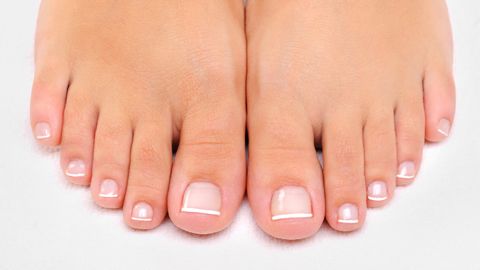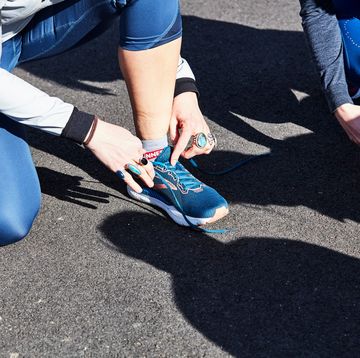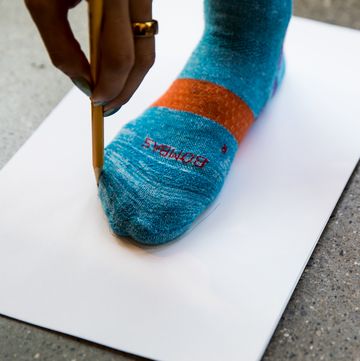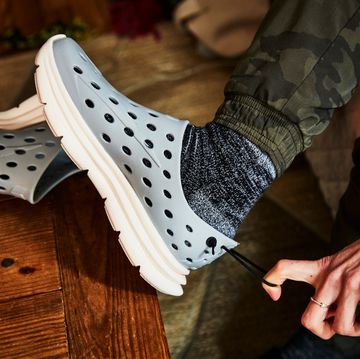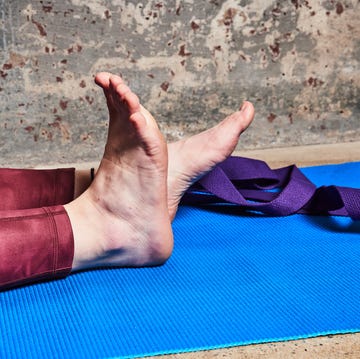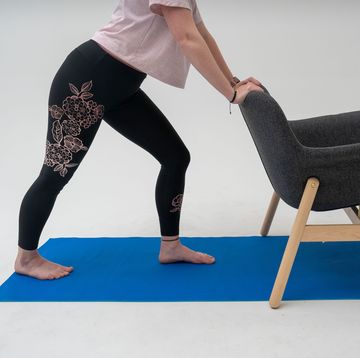Beyond your routine pedi, chances are you don’t give your feet that much attention. But did you know your feet actually have a lot to say about your health? If you take a moment to clue in to your heels and toes, you may notice some indicators of problems that have to do with much more than your feet. “If you notice a change in your feet, from what you would consider normal in the past, it’s generally a good idea to see your doctor,” says Melissa Lockwood, M.D., ABPM-certified podiatrist and DPM.
So the next time you’re pulling off your socks at the end of a long day, clue-in to what’s going on with your lower extremities—you may end up being very thankful that you did. Here, three weird things your feet may tell you about your health.
Ever lose feeling in your toes? Or take off your snow boots during winter to notice your toes have turned completely white? (Or worse, purple?!) Well, that may be a sign you have a circulation of vascular problem, says Lockwood. For example, “a lot of female patients have Reynaud’s syndrome,” says Lockwood—a disease that causes certain parts of your body (generally feet or hands) to get cold or numb when faced with chilly temps.
If you do have this condition, or any other circulation issue, Lockwood says it’s nothing to majorly stress about. That said, it doesn’t hurt to check in with your doctor for an official diagnosis. And if you do have a disease such as Reynaud’s, it’s important to take certain precautions—namely wearing gloves and thick socks if you know you’ll be in cold weather—because it does put you at greater risk of frostbite.
(These Stance Socks will keep your toes toasty)
If you’ve ever had tingling feet, it could actually be a sign of diabetes. “Oftentimes, podiatrists are the first provider to diagnose someone with diabetes,” says Lockwood. “Patients will come in and say they’ve noticed their feet are going numb, or they’ll notice tingling or burning in their feet.” What these patients don’t realize is those are potentially symptoms of peripheral neuropathy (damage to nerves in your extremities), and the most common cause of neuropathy in the United States is diabetes, says Lockwood.
Your toenails can also be very telling. According to Lockwood, podiatrists can often detect if a patient has had lead poisoning in the past, or a variety of vitamin deficiency after simply looking at the nails. “Different types of lines will show up on the nail, based on what deficiency there is,” she says. If a patient is anemic, for example, they’ll have really brittle, breakable nails.
Dr. Metzl discusses how to deal with black toenails, athlete’s foot, and ingrown toenails:
The state of your toenails may even go as far as indicating some thyroid or endocrine disorders.
If you do notice any weird changes in your feet, that’s probably a good sign it’s time to make an appointment with your podiatrist. From there, a podiatrist can either treat you as needed, or refer you to whichever kind of doctor you need. “You kind of become the quarterback,” says Lockwood. “Since I need to send it to the right receiver—meaning the right kind of doctor—to take it from there.”
* * *
The article 3 Foot Symptoms That Could Signal a Bigger Health Problem originally appeared on Women’s Health.
Kristine Thomason is a writer and editor with nearly a decade of experience creating content for print and digital publications. Previously, she was the health and fitness director at mindbodygreen, and the fitness and wellness editor at Women’s Health. Kristine's work has appeared in Men's Health, Travel + Leisure, Health, and Refinery29, among others. She holds a journalism degree from New York University, and is certified in personal training by the National Academy of Sports Medicine (NASM).

